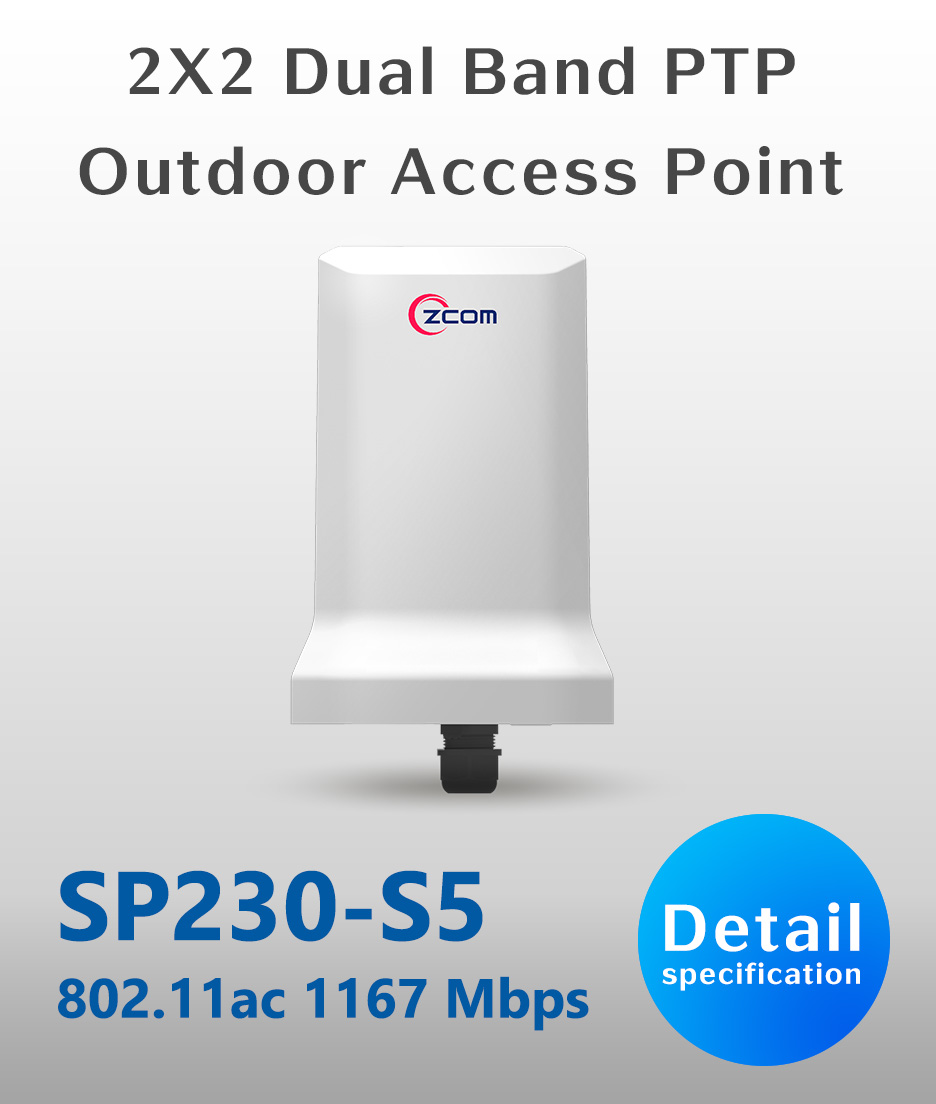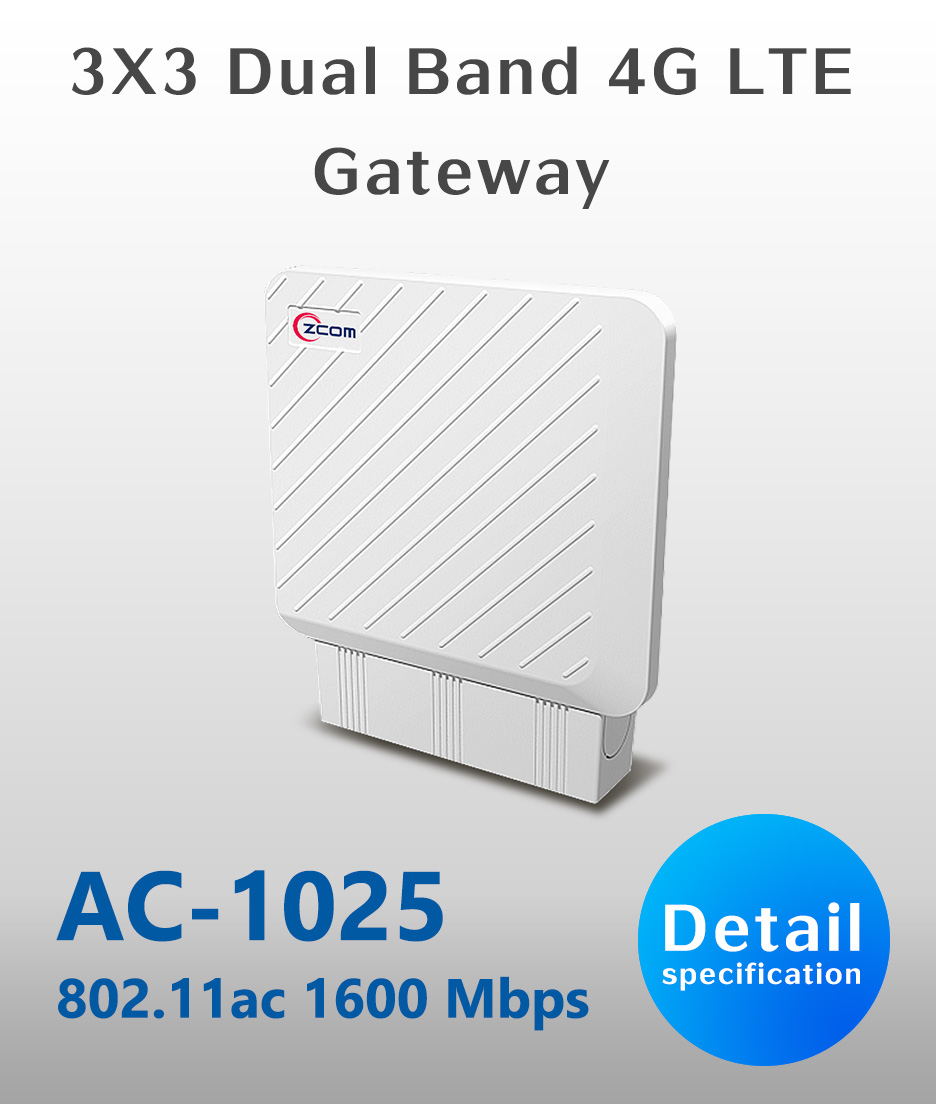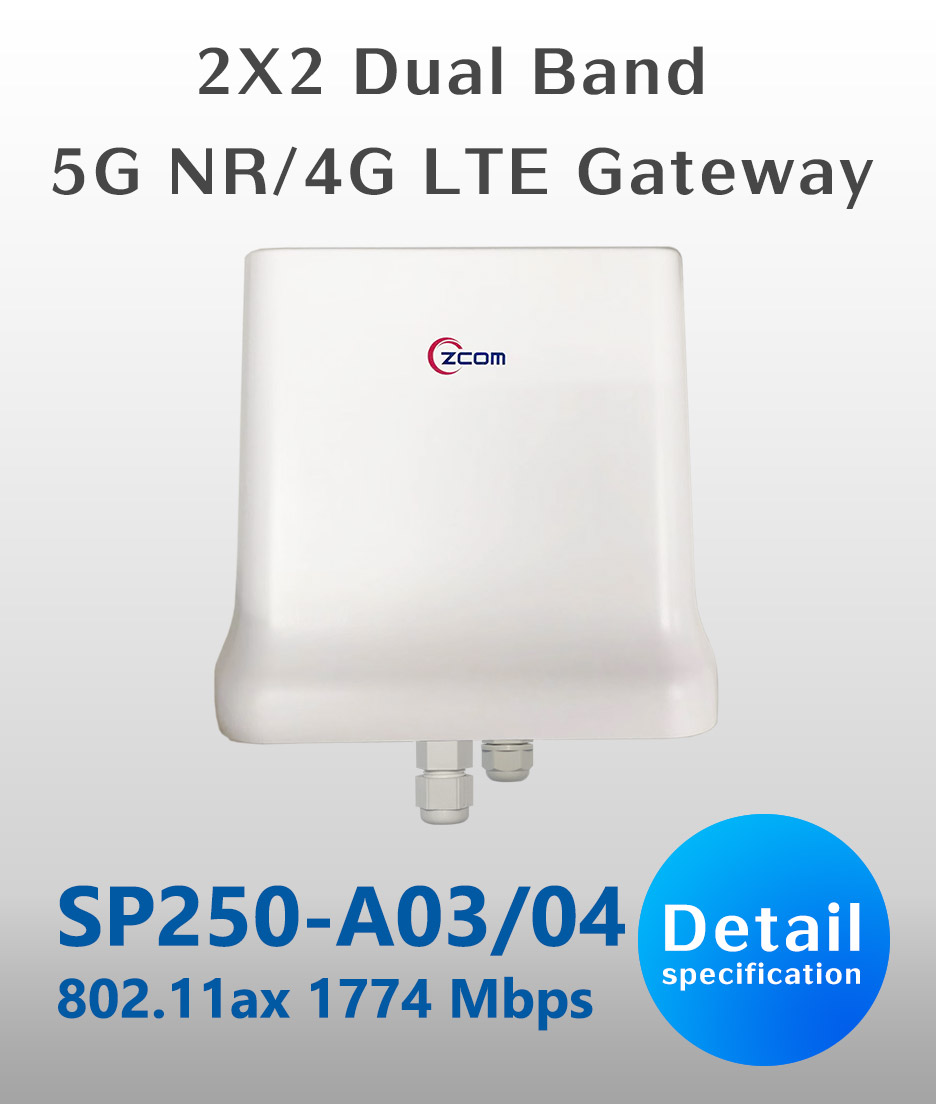【Rural Wi-Fi】PtP Wireless Network Enables a Real-time Slope Monitoring System
【Rural Connectivity】Point-to-(Multi) Point Wireless Network
Enables a Real-time Slope Monitoring System
Deploying a wireless network at MinbaKiu Bridge, Kaohsiung

Requirements
● To overcome the difficulty of signal transmission due to the mountain terrains
● Real-time data and monitoring
● Simple and centralized network management
● Cost-effective network deployment
● Industrial-grade products with shock and vibration resistance (compliant with EN50155), IP67, 14-level wind resistance and a wide operating temperature range
Solution
● Enterprise-level WLC (Wireless LAN Controller), WS7G2 which is capable to manage TAPs (Thin Access Points) and Bridges.
● LTE-Fi gateways, AC-1025 which is compliant with 4G LTE and 802.11ac or SP250-A03 or SP250-A04
● Outdoor wireless access points, SP230-S5
● Gateway, AG240
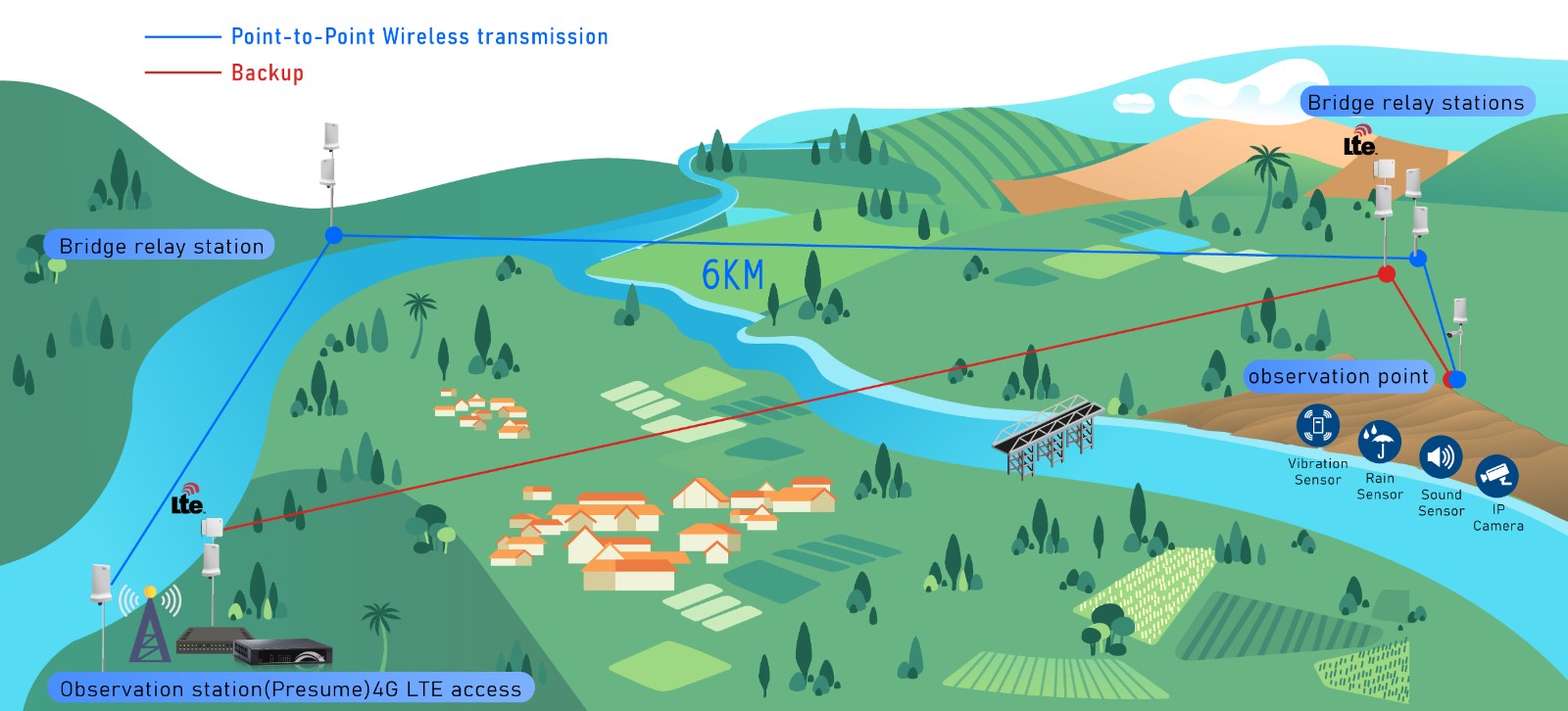
Features
● Save a huge amount of deployment cost
● Enhance signal coverages to create a fast and reliable wireless network
● Control the real-time onsite conditions
● Report the real-time status of engineering vehicles and environmental monitoring data to control center
● Easy installation in short period and easy maintenance
● Centralized management of data
● Network planning and testing by professional personnel
Project Brief
Typhoon Morakot and Typhoon Lekima resulted in bridges crushed and Southern Cross-Island Highway suffering severe damages. Facing the extreme weather, we urgently need more efficient message transmission about the roads in rural and mountain areas. The signal is weak in mountain area and therefore, to improve Taiwan’s disaster prevention and rescue system and reduce the risk of landside in Kaohsiung, how to remotely control the problems of rural/mountain roads in a real-time once the accident occurs is a big challenge.
Z-COM planned network systems according to onsite conditions and transmission distance with abundant experiences in professional networking deployment, offering mountain areas secure and centralized manageable networks.
Deployment Challenges
● The maintenance of outdoor wires is difficult.
● The extensibility and the mobility of wired network are low.
● The mountain climates change rapidly and lead to landslide and falling rocks easily
Network Deployment
There is a digital divide of telecom network infrastructure in mountain areas. Send the big data collected from vibration sensor, rain sensor, sound sensor and a real time Surveillance System and real time conditions of Minbakiu Bridge to outposts by point-to-(multi-)point transmission with the optimized RF capability that extends signal range and coverage. The solution with LTE (Long Term Evolution) technology and NVR (Network Video Recorder) is able to help the outpost predict the collapse with the real-time data collection and also can analyze the historical data. WLC (Wireless LAN Controller) can further monitor the operation of carriers once detecting wireless bridge or outdoor AP is damaged, AP list will show which AP/bridge gets offline immediately so that control center is able to handle the situation promptly and improve management efficiency.
The sensors gather the environmental data and will alert officials about abnormality once detecting abnormal weather or water conditions. When typhoon or flood occurs, the information will be sent back via wireless network and warning system will notice emergency personnel to determine if it is necessary to evacuate. Moreover, it empowers the decision maker to implement system remote diagnosis and troubleshooting that solves the delay problems of judgement and emergency planning caused by data interrupt latency. In addition, a backup mechanism is setup to ensure the system can restore quickly if the natural disaster damages the equipment.
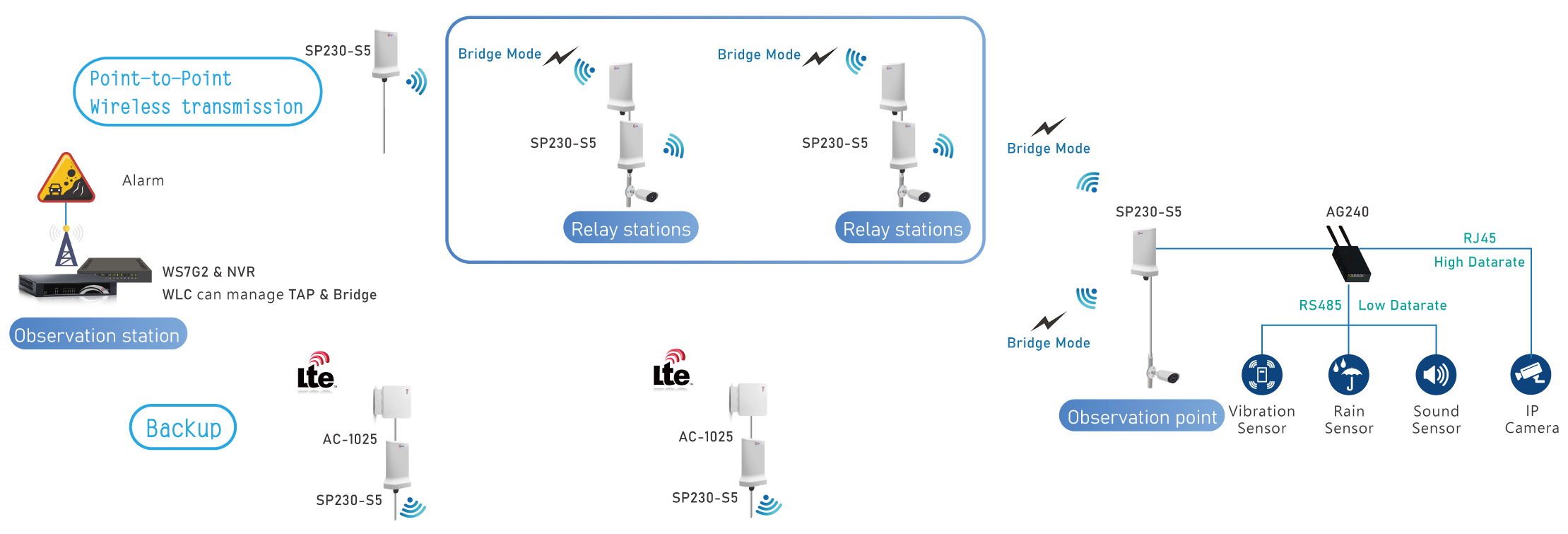
Achievement
Z-COM’s equipment is certified against shock and vibration, compliant with IP67 and passed wind tunnel test as 14-level wind speed and all proves it can withstand operating in harsh environments.
The easy deployment can reduce the cost of installation and maintenance. The control center can centrally manage bridges/TAPs located in different places easily, collecting information and getting alarms via the wireless network to evaluate the risks of flood and landslide promptly and send personnel to inspect and repair the equipment. Compared with wired network, IT staff can perform troubleshooting and maintain the wireless network easily through its centralized management. Besides, Z-COM’ solution provides high bandwidth streaming for real-time video data and historical forecast data. With the reliable data transmission, customers are not only able to realize the latest onsite conditions but also adjust and manage effectively to achieve win-win situation.
